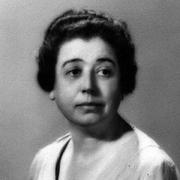
Richard Joseph Neutra was an Austrian-American architect. Living and building for most of his career in Southern California, he came to be considered a prominent and important modernist architect. His most notable works include the Kaufmann Desert House, in Palm Springs, California.

Julia Morgan was an American architect and engineer. She designed more than 700 buildings in California during a long and prolific career. She is best known for her work on Hearst Castle in San Simeon, California.

Craig Ellwood was an American architect whose career spanned the early 1950s through the mid-1970s in Los Angeles. Although untrained as an architect, he fashioned an influential persona and career through a talent for good design, self-promotion, and ambition. He was recognized professionally for fusing of the formalism of Mies van der Rohe with the informal style of California modernists.
Calvin Chester Straub FAIA was an American architect known for his significant impact on architecture as both a designer and an educator. Straub's influence extended through several generations, as he served as a professor of architecture at the University of Southern California (USC) from 1946 to 1961 and later at Arizona State University from 1961 to 1988.

Lilian Jeannette Rice was an eco-conscious, early 20th-century American architect working primarily in the California Spanish Colonial Revival style. Several of her works are listed on the U.S. National Register of Historic Places under spelling variation Lilian Jenette Rice.

Lilian "Lillie" Belle Bridgman (1866–1948) was an American architect, educator, writer, and scientist. After working first as a science teacher and writer, she changed her profession in mid-life and followed her dream of becoming an architect.
Richard Smith Requa was an American architect, largely known for his work in San Diego, California. Requa was the Master Architect for the California Pacific International Exposition held in Balboa Park in 1935–36. He improved and extended many of the already existing buildings from the earlier Panama–California Exposition, as well as creating new facilities including the Old Globe Theatre.

Emily Eolian Williams was a pioneering woman in architecture who was active in Pacific Grove, San Jose, and San Francisco in the early 20th century, at a time, when very few women were able to enter the profession. She mainly designed houses, with conveniently planned interiors, and a few institutional buildings and an exhibition stand at the Panama-Pacific International Exposition in San Francisco.

Esther Frances Born was an American architect, author and architectural photographer who lived and worked in the San Francisco Bay Area, New York, and Mexico. With her husband, Ernest Born, she wrote The New Architecture in Mexico, which also includes an article on the painting and sculpture by Justino Fernández. She traveled in Mexico for 10 months, photographing and drawing historic and modern buildings, ultimately attracting global attention to the dawn of Mexico's modern architecture. Working mostly behind the scenes, she was integral to the success of the Ernest Born architecture firm.
Ida F. McCain (1884–1949) was an early 20th-century American architect active on the West Coast at a time when there were few women in the profession.
Gertrude Comfort Morrow was an American architect who frequently collaborated with her husband, Irving Morrow.
Robert Earl Langdon Jr. was an American architect based in Los Angeles, California. With Ernest C. Wilson Jr., he designed 27 office buildings along Wilshire Boulevard as well as the Getty Villa in the Pacific Palisades and the Bank of America Building in Beverly Hills. He was the President of the Pasadena chapter of the American Institute of Architects.

Katherine Emilie Bashford (1885–1953) was an American landscape architect who designed residential gardens primarily in Pasadena and landscaping for several Southern California public housing projects.
Henrietta May Steinmesch was an American architect most notable as a founding member and later the first national president of the Association of Women Architects.
Marmol Radziner is a design-build practice based in Los Angeles that was founded in 1989 by American architects Leo Marmol and Ron Radziner. The firm specializes in residential, commercial, hospitality, cultural, and community projects, and offers various design services, including architectural design, construction, landscape design, interior design, furniture design, jewelry design, and modern architecture restoration.
Grace Jewett (1876-1946) was an American architect in the early 20th century. She was one of the pioneer women in architecture, and successfully developed her career in San Francisco after the devastation caused by the earthquake and fire in 1906. Jewett studied at the Pratt Institute in New York from 1900-1902, and her career spanned from 1902-1943.She is most well known for her success in designing apartment buildings, but she also worked on various industrial facilities. In 1913, Jewett opened her own practice in downtown San Francisco. She also often collaborated with Italian architect Italo Zanolini.

Rose Connor was an American architect. Called "one of the earliest and most successful women architects of the 20th century", her architectural work was largely residential projects in Southern California, but she also did work for the U.S. military and Fuller Theological Seminary.
Davida Rochlin is an American architect, active primarily in Los Angeles and Southern California. Her work includes residential and commercial buildings and is notable for its emphasis on green and passive design concepts. She is known for her research on the American porch, which began with her Master's in Architecture thesis at the University of California, Berkeley College of Environmental Design and continued throughout her career. Rochlin is LEED Homes and Living Future Accredited.









